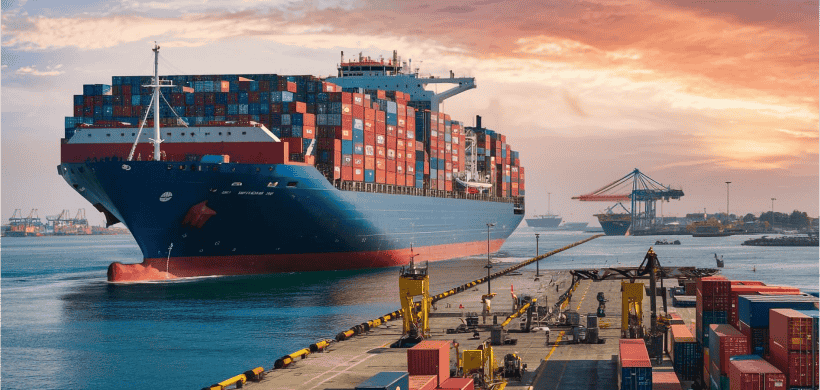Ocean Freight
Your Solution Starts Here
Ocean Freight
A standard container is a metallic box (steel or aluminium) with a double door at one end and in which general cargo can be safely loaded and transported. Most international container traffic is carried in either 20 foot or 40 foot containers. Container dimensions are standardized and the maximum load is described in the table below.

Sea Freight Containers 20′ foot container 40′ foot container Capacity (m³) 20′ – 30 / 40′ – 60 Internal dimensions L x W x H (meters) 5.89 x 2.32 x 2.23 12 x 2.32 x 2.43 Door W x H (meters) 2.30 x 2.14 2.30 x 2.23 Maximum load (tonnes) 20′ – 18 / 40′ – 30
There can be slight variations in these measurements depending upon the maker (always give exact measurements of large, individual packages).
Containerized shipments are either Full Container Load (FCL) or Less than a Container Load (LCL):
FCL is a “door to door” concept. Containers are sealed at origin and opened at the destination, offering high security and minimum handling. The majority of containerized UN cargo is FCL.
LCL is a “Terminal to Terminal” concept. When a shipper does not have enough cargo to load a container to its full capacity, a forwarder running a “consolidated container service” may be contacted and allowed to add, i.e. using one container for several loads originating from various shippers. This is of greatest interest in the case of shipments to land-locked countries, as the use of containers practically eliminates the risks of loss,pilferage and delays in the port of unloading for transshipment over land. However, if reloading is required before the final destination, this method offers lower security, a higher risk of theft or damage during loading/offloading and/or exposure to adverse weather conditions.
The loading and stuffing of a container to safely secure the cargo preventing movement and/or collisions inside the container is a specialized procedure that is normally carried out by professionals to reduce the risk of cargo damage. Whether the buyer or the seller carries the cost and risk of stuffing the container must be decided before bidding is conducted and the correct INCO Term used in the bidding document.
